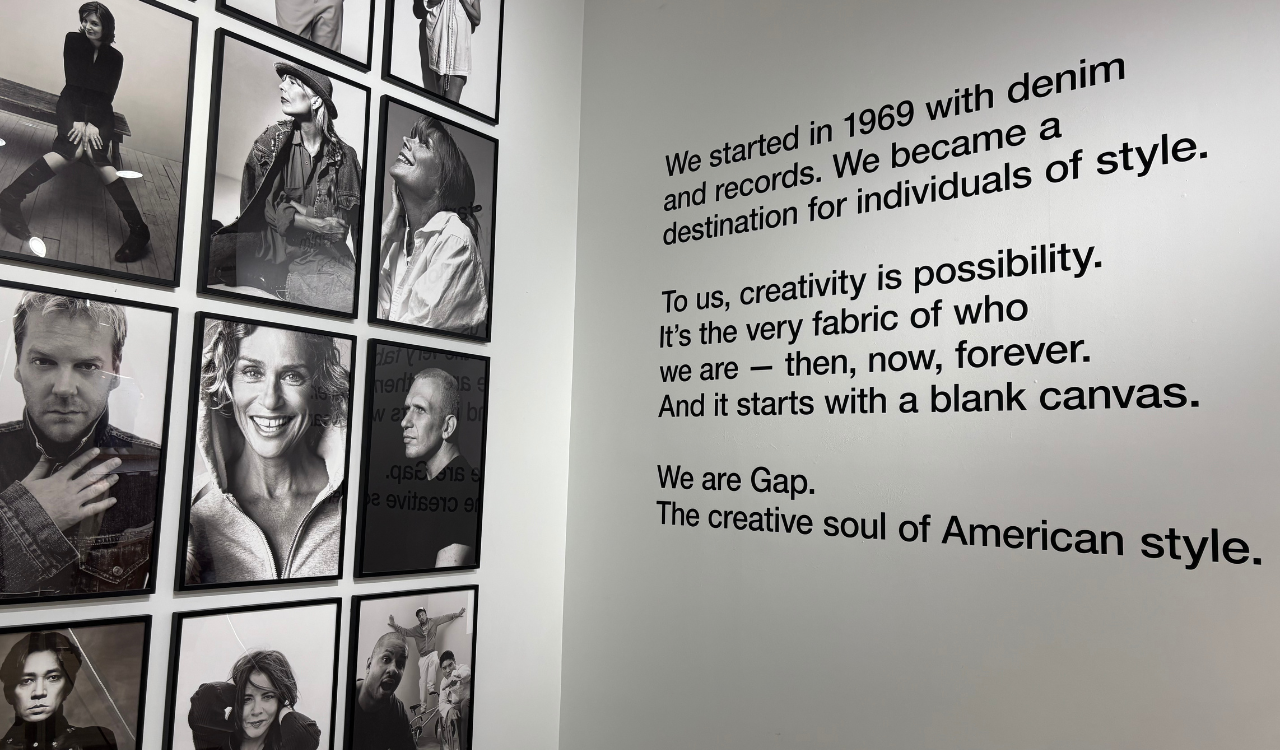The Twitterverse and the rest of the media world erupted with outrage over Balenciaga’s latest holiday ad campaign featuring children posed with teddy-bear bags dressed in S&M bondage gear and another ad that included a copy of a Supreme Court opinion on child pornography
Tragedy is a genre of literature that’s been around since the dawn of time, from the Bible to the Greeks to Shakespeare and onward. The drama unfolds from some fatal flaw in the hero’s character, which is something understood and shared by humanity, such as greed, jealousy, and the lust for power. The central character is tested through the course of events, which eventually leads to his or her downfall in the legend, myth and real life.
Tragedy as Catharsis
Dramatic and literary tragedies are intended to teach moral lessons for our edification. In a modern-day context, I believe the makings of a tragedy are unfolding in Balenciaga’s recent trials and tribulations. The moral is clear and the luxury industry needs to take it to heart and turn around before it is too late.
The Twitterverse and the rest of the media world erupted with outrage over Balenciaga’s latest holiday ad campaign featuring a children posed with teddy-bear bags dressed in S&M bondage gear and another ad which included a copy of a Supreme Court opinion on child pornography
Luxury doesn’t play to the masses because the industry’s very existence depends on the hierarchical structure of society. It reinforces the distinction between the masses of society and the elite and privileged that can afford their products. .
Luxury defines and markets status and rewards aspiration for those who can afford to pay the premium for its goods reflecting high-quality craftsmanship, scarcity, and exclusivity. It sells “class.” What tarnishes luxury is when it becomes “crass,” defined by the dictionary as “without refinement, delicacy, or sensitivity; gross, coarse, common, crude.” And in my opinion, what Balenciaga did in its recent ad campaigns was crass and other luxury brands need to learn from it.
Balenciaga’s Radical Shift
In 2015 Kering chose Demna Gvasalia, who goes by his first name, to replace Alexander Wang as creative director of its Balenciaga brand, founded by Cristóbal Balenciaga in 1919. Only 34 at the time, Demna had worked for a few years as senior designer for women’s ready-to-wear at Louis Vuitton under Marc Jacobs, before founding Vetements with his brother, which became an overnight success.
He said at the time that Vetements’ purpose was to “subvert” the high fashion status quo. He took fashion inspiration from the street, deconstructed it and put it back together in unexpected, often surprising ways, like his Vetement’s jeans made from mismatched strips of old denim. At Balenciaga he reinterpreted the iconic 99-cent IKEA bag in leather and introduced what he called “ugly sneakers” and gave the humble Crocs a luxury makeover.
“Balenciaga under Demna revolutionized how we think about luxury as a part of our everyday cultural conversation by its juxtapositions, clever remix of high and low and satirical takes on what’s ordinary versus extraordinary,” explains Dr. Martina Olbert, founder of Meaning. Global and a leading authority on brand meaning. Demna was and is a bad boy in fashion and he’s attracted other bad boys like Kanye West, who loved Vetements clothing. West (now Ye) was introduced to Demna by his ex-wife Kim Kardashian (who also models for Balenciaga) and together they collaborated on a Yeezy Gap Engineered by Balenciaga collection.
We all know what happened after Ye went off the rails. Balenciaga immediately kicked him to the curb. However, Balenciaga made a quick recovery from the debacle and wasn’t held accountable for the ill-chosen words of an independent flameout.
Balenciaga on an Edge
That will not be the case for Demna and Balenciaga’s latest misstep. The Twitterverse and the rest of the media world erupted with outrage over Balenciaga’s latest holiday ad campaign featuring children posed with teddy-bear bags dressed in S&M bondage gear and another ad which included a copy of a Supreme Court opinion on child pornography. “This campaign is not just culturally insensitive. It uses children to make a statement and that is a no-go,” said Dr. Olbert “That’s why it feels distinctly different to any other previous campaign. It’s stretched too far for the public taste.”
The company removed the imagery, made a quick apology and a claim that it had no knowledge or control over the props used in the ad. “We take this matter very seriously and are taking legal action against the parties responsible for creating the set and including unapproved items for our Spring 2023 campaign photoshoot,” the company said in a statement. The photographer also claimed he had no control over the props and simply shot the image. It’s a stretch to believe Balenciaga’s claim of innocence. Absolutely nothing gets out of a luxury brand’s door without extensive reviews. Nonetheless, according to the NY Post, “Balenciaga has filed a $25 million lawsuit against the producers of the ad campaign. The fashion house brought the suit against production company North Six, Inc. and set designer Nicholas Des Jardins and his eponymous company for the inclusion in one of the ads of legal documents from a US Supreme Court decision on child porn laws.” The Business of Fashion rescinded its Global Award to have been presented to Demna at their annual gala describing the Balenciaga images as “wholly inconsistent with our values.” The drama that this ad campaign kickstarted will haunt Balenciaga for some time to come.
Being provocative is part of the DNA of edgy fashion designers and brands. But according to Dr. Olbert, “The learning here is clear: You can poke culture but beware, it pokes back and it can cost you.” I think it is clear that Balenciaga went way too far, sacrificing sensitivity and good taste for being a provocateur.
Poking the Bear
A few years back Dolce & Gabbana poked a bear, or in this case, an Asian dragon, and paid for it. The brand was castigated for its culturally insensitive “Eating with Chopsticks” ads in China. Though a private company, Statista estimates revenues fell from $1 billion in 2019 to $776 million 2021. Its downfall happened despite dynamic growth across the personal luxury goods market that resulted in full recovery from its losses during the pandemic.
Poking culture and the fashion establishment is what Demna does and so far it has paid off. Demna is credited with reviving the Balenciaga brand, now estimated by Bloomberg to contribute $2.4 billion to Kering’s revenues. Though it is small compared to sister-brand Gucci’s $10 billion, both share a progressive culture that pushes the envelope to change the fashion and pop culture.
But how far should Balenciaga and other luxury brands push? Luxury should reflect the highest standards just as its products reflect the highest level of achievement in quality. It doesn’t pander to the lowest common denominator, but rather rises above to maintain its elevated status for the pleasure of its customers.
Demna has different ideas about his work. “Fashion should not please,” he said in an interview with Vogue. To succeed in fashion, he believes, you must approach it fearlessly because fear blocks creativity. “If you are trying to please, you’re never going to make it. You should not please.” Demna may see himself and Balenciaga as an unstoppable force, but it may have met an immovable object: human nature and some people’s desire to hold onto their traditional sense of luxury, who would opt out of the new Balenciaga direction.
Luxury’s Cultural Role
On the one hand, luxury brands and their design directors push the culture forward by interpreting the prevailing Zeitgeist – the spirit of the age – into a lifestyle expressed in fashion. They are change agents, setting trends that others follow.
On the other, luxury brands depend on upholding and maintaining the cultural status quo of the needs and desires of their customers with relevant symbols of their status, success and privilege. Luxury serves the elite few, not the less-affluent many.
As such, luxury brands have traditionally been cultural constructs based on society’s hierarchical structure. But in the current age, luxury brands must push beyond their legacy target market in search of growth. They are moving into uncharted territory where the emerging luxury consumer culture’s or subculture’s underlying values may be in direct conflict to tradtional legacy luxury. In the pursuit of a brand “democratizing” luxury, do its elite customers really want to be democratized?
Many luxury brands have followed Balenciaga’s lead into popular street culture in an effort to appeal to younger, aspirational consumers. Vogue said Balenciaga’s offerings under Demna reflect “both indie, counter-fashion’products and global bestsellers.” That reveals an underlying tension for luxury brands to be indie and counterculture while also not tarnishing the totems of the traditional customers’ taste, status and privilege. It is a transitional moment in the luxury world, and the industry is walking a fine line to appeal to both the new and old-money worlds of luxury customers.
Luxury Icons
Luxury has historically reflected the best that human ingenuity, creativity, and craft can make. It pleases and gives pleasure to its owners; takes them from the ordinary, everyday to the extraordinary. It represents the highest creation of artisanal and artistic value.
The founders of the great luxury houses like Balenciaga, Vuitton, Gucci, Hermès, Dior, Givenchy, Tiffany, Chanel, Celine and others, understood their roles as purveyors of objects of desire for their particular customers who believed they deserved the finest they could afford. And these designers were geniuses because they could read the room and evolve with their customers, reflecting the changing mores, lifestyles and cultural memes of the day.
As I said, luxury is at a crossroads. Luxury brands need to constantly evolve to stay culturally relevant, but how far can and should they go? Balenciaga went too far in their ad campaign in the name of being provocative for the sake of being provocative. The not-so-subtle imagery was not relevant in a way that reinforced the integrity of the brand. It caused an overnight crisis and had compromised the brand.
Other luxury brands are walking the same fine line, maybe not going to far afield but getting dangerously close to catering to the profane, defined as “to treat (something sacred) with abuse, irreverence, or contempt.”
Sacred is a word most commonly associated with faith and religion, but it has a secondary secular meaning, something that is “highly valued and important.” Cheap pop-cultural shots and gross insensitivity to common decency and taste are unacceptable. Both traditional and new luxury will always need to serve their customers with respect and empathy. They should follow the Ritz Carlton’s motto: “We are ladies and gentlemen serving ladies and gentlemen.” That motto serves every luxury customer, new and old money, well.




